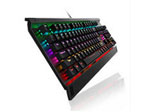Types and Uses of Dental Blades
view count:60 classifyNEWS
Dental blades are essential tools used in various dental procedures. They are designed to cut, trim, and shape dental materials with precision and accuracy. This article aims to provide an overview of the different types of dental blades available in the market and their specific uses in dentistry.
1. Scalpel Blades:
Scalpel blades are commonly used in dental surgeries and procedures. They are available in various designs, such as the #10, #15, and #22. These blades differ in size, shape, and curvature, allowing dentists to perform specific tasks like incisions, tissue dissection, and periodontal surgery.
2. Endodontic Blades:
Endodontic blades are specially designed for endodontic procedures, such as root canal treatments. They have unique features like a non-cutting tip, allowing precise access to the root canals, and a sharp edge for cutting or removing gutta-percha during the cleaning and shaping phase.
3. Crown and Bridge Blades:
Crown and bridge blades are used for cutting dental materials like ceramics, metals, and acrylics. These blades are designed with a fine and sharp edge to ensure accurate trimming and shaping of dental prosthetics. They are also useful in adjusting the margins of crowns or bridges for optimal fit.
4. Periodontal Blades:
Periodontal blades are specifically designed for periodontal surgeries and gum procedures. They have a curved shape and a sharp, thin blade to access and remove inflamed gum tissue during procedures like gingivectomy or crown lengthening. These blades aid in achieving better aesthetics and improving oral health.
5. Surgical Blades:
Surgical blades are used in complex oral surgeries, such as dental implant placement or bone grafting. They are available in various shapes and sizes, including straight, curved, and angled blades. These blades enable precise incisions, tissue reflection, and bone cutting, ensuring a successful surgical outcome.
6. Biopsy Blades:
Biopsy blades are used for taking tissue samples for diagnostic purposes. These blades have a sharp, pointed edge, allowing dentists to obtain accurate biopsy specimens from suspicious oral lesions or abnormalities. They ensure minimal trauma to the surrounding tissues during the biopsy procedure.
7. Orthodontic Blades:
Orthodontic blades are used in orthodontic procedures for cutting and trimming orthodontic wires, elastics, or bands. These blades have a small, sharp edge, making it easier to work in confined spaces and ensuring accurate wire adjustments.
Conclusion:
Dental blades play a crucial role in various dental procedures, allowing dentists to perform precise and accurate cuts, incisions, and shaping. Understanding the different types of dental blades and their specific uses is essential for dentists to choose the appropriate blade for each procedure. By utilizing the right blade, dental professionals can enhance treatment outcomes, improve patient comfort, and ensure the success of various dental interventions.
 Circular blade_paper cutter blade_Dental blade non-standard customization blade-Meirente Blade Co., Ltd
Circular blade_paper cutter blade_Dental blade non-standard customization blade-Meirente Blade Co., Ltd













